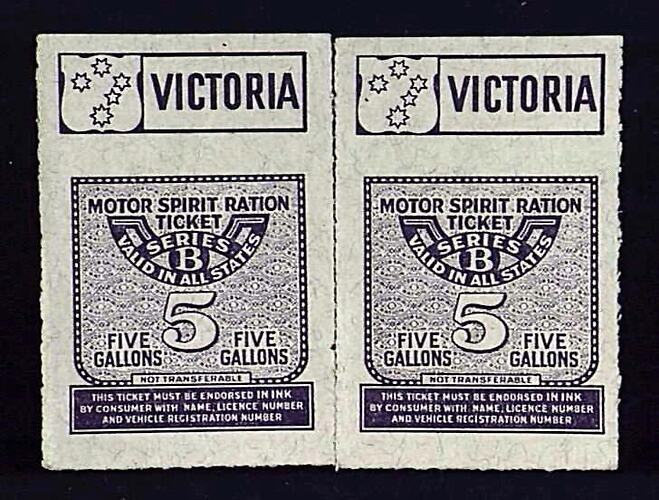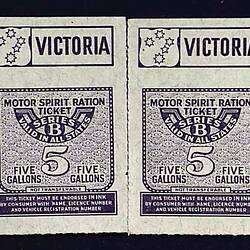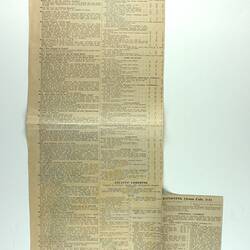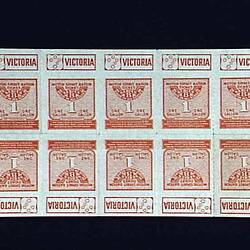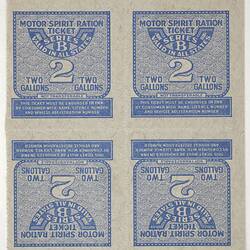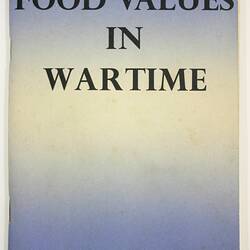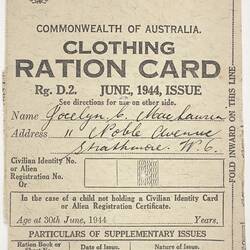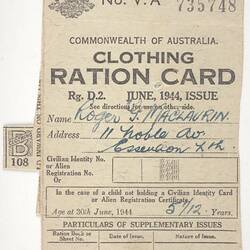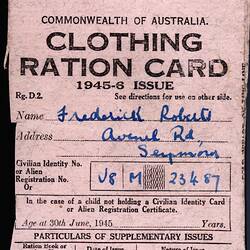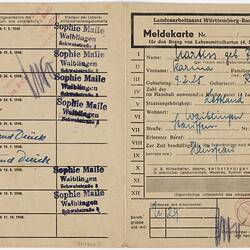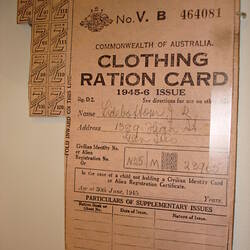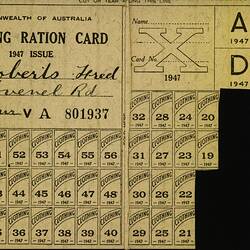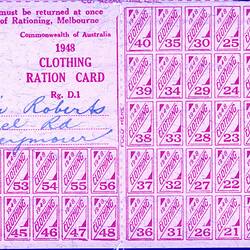Rationing during World War II in Australia was a fact of life for all civilians. Shortages caused by the long war, including action in South-East Asia and the Pacific, meant supplies had to be controlled to curb consumption and limit inflation. The first rationed item was clothing, gazetted on 12 June 1942. Tea and sugar followed soon after, whilst butter was gazetted in June 1943 and meat in January 1944.
The regulation and restriction of such commonplace and universal items ensured each citizen would receive equal resources. Each person was allocated a certain number of coupons for each item, allowing them to receive a fair but adequate amount. For example, each adult was allocated one pound (500g) of butter per fortnight.
Rationing effectively curbed inflation of the Australian currency, ensuring the economy remained stable in the turbulent war period. However, such policies inevitably lead to civilian backlash, and a black market developed. Extra goods or luxury items were sold above market price in illegal transactions as a means of bypassing restrictions on certain items. Backyard produce changed hands without official control. Petrol was by the far the most fiercely contested rationed item, and there was much debate and lobbying against its institution from motor companies, newspapers and various commercial enterprises. By June 1940, however, with supplies dwindling, the Government introduced rationing to reduce petrol consumption by 50%. In October 1940 a final scheme enforced a one-third reduction. Drivers had to apply for a petrol licence, from which they were allocated ration tickets based on their needs. Petrol rationing was not strictly enforced until 1942, but remained in place until February 1950 after much conflict between the motor industry and the government.
Rationing for other goods was also in place long after the War ended in 1945, with tea the last to be abolished in July 1950.
Australia's rationing policies, whilst ensuring the supply of essential goods for its citizens, were also heavily influenced by the wishes of Britain. Imperial ties were still strong and Britain expected Australia to put the UK's needs above its own. For instance, Australian motorists had 50% fewer petrol rations than drivers in Britain and New Zealand at the end of the War. Britain expected Australia to save its money in any way possible, to aid Britain in repaying its substantial war debts to the US. Furthermore, Australia maintained meat rationing until 1948 to support reduced meat rationing in Britain (Queensland). Rationing in Britain, however, was much more severe than in Australia. Britain's isolated position as an island meant her imports were curtailed, severely limiting available food. Thus food rationing was introduced in January 1940, and goods were delegated with the use of coupons as in Australia. Lines for basic items became longer as the war dragged on. Rationing did not end in Britain until 1954, four years after Australia, with meat being the last product to be abolished.
References:
'Rationing of food and clothing during the Second World War', Australian War Memorial web site https://www.awm.gov.au/articles/encyclopedia/homefront/rationing, accessed 27/7/2017
More Information
-
Keywords
-
Authors
-
Article types
